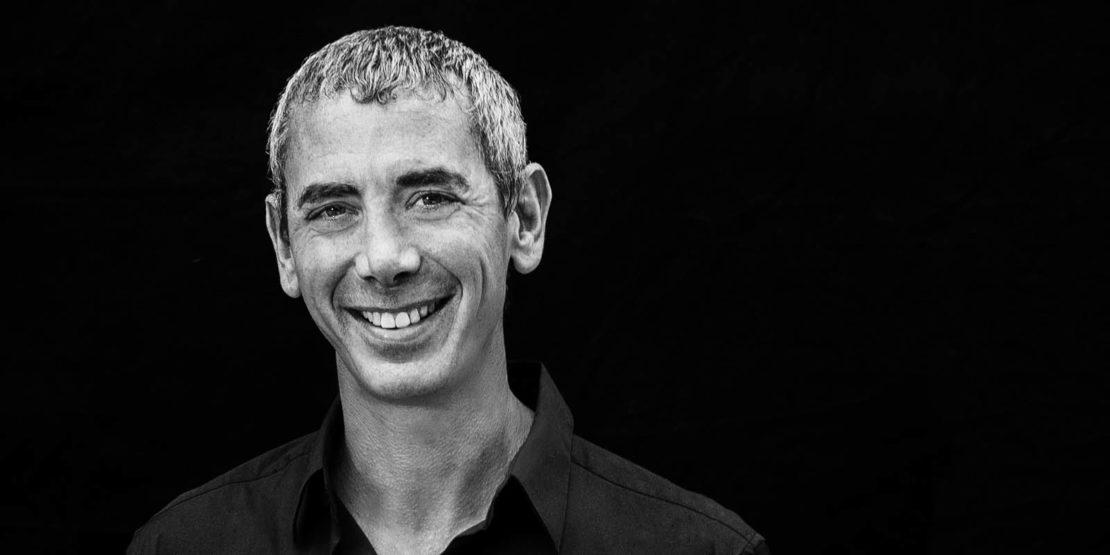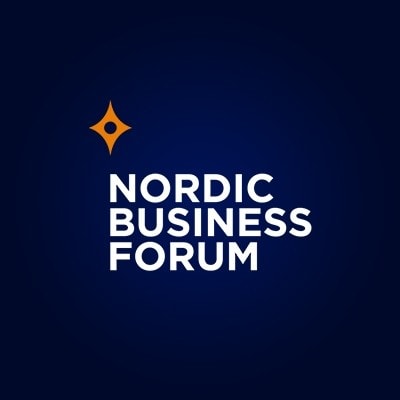17Aug2018
About Steven Kotler
Steven Kotler is a New York Times bestselling author, an award-winning journalist, and the co-founder & director of research for the Flow Research Collective. He is one of the world’s leading experts on ultimate human performance. His 2016 book, BOLD: How to Go Big, Create Wealth, and Impact the World, is a radical, how-to guide for using exponential technologies, moonshot thinking, and crowd-powered tools to help today’s entrepreneurs make their boldest dreams come true. Bold has been included on the New York Times, Wall Street Journal and Amazon best-seller lists.
Never known for slowing down, Steven’s most recent publication, Stealing Fire: How Silicon Valley, the Navy Seals, and Maverick Scientists Are Revolutionizing the Way We Live and Work, came out early last year. In it, he and co-author Jamie Wheal investigate the pioneering work of scientists and the leading edges of this human high-performance revolution. We spoke to Steven about his upcoming session at Nordic Business Forum 2018 entitled, “Climbing Mount Bold: How Organizations Can Level Up Their Game Like Never Before”.
Speaker Spotlight Interview
Nordic Business Report: Hi, Steven! Great to have you with us. Let’s start by addressing your upcoming session at Nordic Business Forum 2018. Could you tell us what “flow” and “ultimate human performance” mean to you?
Steven Kotler: Great to be here, and yes – flow is technically defined as an optimal state of performance, one where we feel our best and we perform our best. More specifically, it refers to those moments of rapt attention and total absorption, when we get so focused on the task at hand that everything else just seems to disappear. Action and awareness will start to merge. Time passes strangely, sometimes it slows down, occasionally it speeds up. Like five hours will go by in like five seconds, and you’re like, what happened? And throughout, all aspects of performance, both mental and physical, go through the roof. And there are lots of synonyms for flow. Runner’s high, being in the zone, peak experience, peak performance, being unconscious. Stand-up comics call it the forever box. Jazz musicians call it being in the pocket. The lingo is sort of endless. We define it technically– flow science is about 150 years old, but over the past 20 years the neuroscience surrounding flow has gotten very accurate. So when I define flow, I move from the psychological one to the neurobiological one, and then we are looking for specific changes in brain function. And I can define those for you later if you care. But that’s a quick and dirty.
Now, human performance is obviously the study of how we perform well. Optimal human performance is the study of how we perform at our best and feel at our best at the same time. Ultimate human performance is what it takes to do our best when it matters most. So high speed decision making, life or death consequences, things along those lines.
One thing that I will really talk about is something called the challenge-skills balance. It’s the most important flow trigger – it’s the golden rule of flow – and all it basically says is that the challenge of the task at hand to maximize flow slightly exceeds your set of skills. You want to stretch, but not snap. And for reasons that are too complicated for me to get into, I’m just going to tell you that, on average, some of the time, occasionally, the exact difference between challenge and skills is about 4%. Here’s where top executives stumble all the time. Top executives are, as a rule – not always, but as a rule – tend to be aggressive risk-takers, high performers, and they will take on challenges that are 20%, 30%, 40%, 50% greater than their skill set, and as a result, they will lock themselves out of the state that they need to accomplish their goals. Which is not to say, don’t go after the huge goals but learn to chunk your goals into bite-sized chunks, and focus on the bite-sized chunk, and then the next bite-sized chunk. That’s how you scale towards impossible. Big goals are great, they boost motivation 25% right out of the gate, that’s a well-established performance metric, but they will block flow when they’re too big, and top executives always do that. That’s super consistent.
NBForum: Fascinating! And let’s look under the hood. What does it look like – physically and chemically – when people reach a flow state?
SK: So we’re starting to get our first look at physiological data, heart rate variability, galvanic skin response, those sorts of things. We’re starting to get correlates, but nothing is specific enough that I want to say, “this is actually flow”. We’re not there yet. We’re looking. What we do know is that, if you want to talk about where something comes from in the brain, you’re really talking about four things: neural anatomy and networks (i.e. where in the brain something is happening), what locations are involved, and then neurochemistry and neuroelectricity (i.e. the two ways the brain communicates with itself and the body). We send chemical signals and we send electrical signals. So with neuroanatomically, primarily what we see is a deactivation in the prefrontal cortex. A lot of the brain’s so-called executive functions come offline. Long-term planning, some of the complex decision-making, our sense of morale, our sense of time. That’s why time passes so strangely in flow. Time is localized in the prefrontal cortex, and if that part of the brain starts to shut down we can no longer separate past from present from future. We see brainwaves move down to the alpha-theta borderline. Normally we’re at beta, it’s a fast-moving wave. Alpha is sort of slower, it’s daydreaming mode. And then theta is where we are in REM sleep, it’s a lot slower. Flow is on the borderline between the two states. And neurochemically, we see sort of the stress hormones get flushed out of the system, and instead, they get replaced by feel-good performance-enhancing neurochemicals like dopamine, anandamine, endorphins, serotonin, and sometimes oxytocin.
NBForum: And this is where the Flow Genome Project seems to fit in. Could you tell us a bit about that and what you’ve discovered about reaching a flow state?
SK: If you would have sat down with myself and Jamie Wheal and any of our board of directors or board of advisors when we founded the Flow Genome Project and said, “what do you know about flow that you’re willing to bet the house on? What are you certain of?” I think everybody on our team would have told you that we think this stuff is really hard to train. In the beginning, we were only working with US Special Forces, professional and Olympic athletes, and really only the C-suites of specific companies, and we were very particular about that. As the research has progressed over the past five years, one of the things that we’ve known for 30 years, but we haven’t really had a great understanding of, and it really has crystallized over the past 5 years, is flow states have triggers – preconditions that lead to more flow. There are, let’s say, 12 individual triggers that we know of and 10 group triggers. An individual trigger is what it takes to drive you into flow. A group trigger is what it would take to take everybody in a room into flow. So group flow is the collectively shared version of the state. It’s what happens when a team comes together in a great brainstorming session, or you see a band come together and the music just starts to soar, a basketball team playing incredible hoops. That’s group flow in action. And there are 10 triggers for that.
What we’ve discovered along the way is, not only do these states have triggers, but we’ve discovered that they’re remarkably easy to train. And let me give you two examples of what I mean by that. I’ll talk about this when we’re together, but we did a joint learning experiment with Google. We took I think it was 70 Googlers from all over the company, so engineers, sales, marketing, coders, facilities people, I think somebody from security, and we trained them up in some high-performance basics and then the use of four flow triggers over the course of about six weeks, with about an hour a day of actual homework. And then really two big training sessions, and then little pop-ins. So not a tremendous amount of time spent with them, but some time. And they put in their homework. But on the back end of that, we saw a 35 to 80% increase in flow. We are seeing similar numbers through our online digital training courses as well, where we test flow pre and post using really established psychometric instruments, and on average we’re seeing a 70% boost in flow measuring eight categories after our training. And this isn’t just because our kung fu is really badass. It’s because this stuff is actually remarkably easy to train because we’re biologically hardwired for it. Everybody is built to do this. This is how we perform at our best, so it’s really easy to give people the framework, the context, and the fundamental skills needed to start really improving the amount of flow in their lives, which is a huge deal.
Flow is correlated with huge bursts in motivation, in creativity, in learning, in productivity at work, in quality of life, happiness, meaning, satisfaction, health. Anything you could possibly think of that you would want in your life flow, because it’s optimal performance across the board. So flow massively amplifies all those things. And I mean massively. For example, learning and studies run by the US Department of Defense and friends of ours at an organization called Advanced Brain Monitoring that does really good brain imaging work, they used EEG to drive soldiers into flow, and they found that soldiers in flow learned 430% faster than normal. So put that in context, Malcolm Gladwell’s fabled 10,000 hours to mastery, Anders Ericsson’s research, what the research shows here is that flow can cut that in half.
And these numbers are kind of across the board. Like you see McKinsey measure productivity in business executives in flow at 500% more productive. We just finished a huge study on flow and creativity where we looked at five sub-processes in idea generation through problem-solving and things, components of the creative process, and individually each one was spiking by like 40%. Then you add them together and you’re seeing like a 340% spike in creativity, which is actually low in comparison to self-reported spikes in creativity in flow.
NBForum: Are there certain conditions that companies can set to foster a more flow-ready environment for their employees? And can you scale it?
SK: Well, there are a couple of real obvious things. Flow requires complete concentration, so if you have an open office plan, what the hell are you doing? That’s an absolute disaster. We’ve found, and research done by others has shown, that 90 minutes to 120 minutes of uninterrupted concentration is what you need for flow. And if you’re working on hard, creative problem-solving kind of stuff, you may want a couple days a week that are like 4-hour blocks and not just 90 to 120-minute blocks. And then there are other things. For example, we know one of the other triggers for flow is immediate feedback. So, if you have the kind of organization where people get quarterly feedback or annual feedback or six-month reviews, that’s not the kind of feedback you need for flow. High flow companies are companies that value rapid experimentation. Agile Software is a great example. Those kind of very tight feedback loops are fantastic. If people don’t have those kinds of relationships with their bosses, or bosses are too busy to give that level of feedback, you can find feedback buddies within the corporation where you do that and there are ways to kind of zero-in on the exact feedback that you want to maximize flow, and that is individually different.
That’s along the large-scale lines, and then there’s a lot of individuals things too. For example, obviously, focus is really important, so any kind of meditation training, mindfulness training, is great for that. Also calming down the nervous system, which mindfulness will also do, will also make you more flow-prone. So there’s a wide variety of interventions, there are technological interventions, there are all kinds of stuff you can do. Some of it depends on who you are, what kind of person you are. For example, if you go to the Flow Genome Project website, as soon as you roll onto the page a popup will show up that will say, take our quiz. And what that is is a free flow profile, it’s diagnostic. It basically says, if you’re this kind of person, you’re likely to find flow in these directions. If you want more flow in your life, go there, take that, and follow the instructions. That’s the place to start.
NBForum: Fantastic! And last but not least: if people reading this interview learn only one thing from you, what should it be?
SK: The most important thing that everybody needs to know is that the states of consciousness are universal. Everybody is capable of them. And what that means is, we are capable of so much more, individually and as a collective, than we know. And my study, what I do, what I’ve done for 30 years in every domain imaginable, is ask the question at a practical, non-hyperbolic level. What does it take to do the impossible? I’m interested in those moments when something that has never been done before and was not believed doable, gets done. In athletics, in innovation, in business, there’s always a flow state at its heart. If you talk to the people involved, most of them will tell you they had no idea that they were capable of what they were actually capable of. It was a gradual process that flow leveled them up, and leveled them up, and leveled them up. But that’s, I think, the most important point. We’re capable of so much more than we know.
About Nordic Business Forum 2018
Nordic Business Forum will host its 9th annual business and leadership conference by the same name in Helsinki on the 26th and 27th of September 2018 for 7,500 C-level executives and business owners. Our 2018 main event will bring to the stage some of the world’s preeminent experts on strategy, artificial intelligence, and peak performance for two action-packed days.
NBForum 2018 is a place where you will uncover strategic success principles, discover how to apply new technologies to win in business, and learn how to drive and sustain personal performance. It’s also THE place to network and drive business development. The networking opportunities presented by our guests are unparalleled in the Nordics. You’re getting more than just a conference ticket — you’re getting access to some of the greatest business minds on the planet!
Nordic Business Forum is Europe’s leading conference organizer with events in Finland, Sweden, and Norway. Our 2018 event is sold out, but you can tune in to the event from anywhere in the world with our live stream licenses, which are tailored to individuals and groups (communities).
Recommend
Subscribe to Our Newsletter
Our Leader’s Digest newsletter provides inspiration and valuable business lessons tailored for leaders. You get quality business content focusing on a different theme biweekly.

 by:
by: 
